How is hepatitis a treated. Hepatitis A: Diagnosis, Treatment, and Prevention Strategies
How is hepatitis A diagnosed. What are the treatment options for hepatitis A. Can hepatitis A be prevented. Who is at risk for hepatitis A infection. How is hepatitis A transmitted. What are the long-term effects of hepatitis A. How does hepatitis A differ from hepatitis B and C.
Understanding Hepatitis A: Causes and Transmission
Hepatitis A is a highly contagious liver infection caused by the hepatitis A virus (HAV). Unlike other forms of viral hepatitis, hepatitis A is typically a short-term infection that does not lead to chronic liver disease. The virus is primarily spread through the fecal-oral route, meaning that a person can contract the infection by ingesting even microscopic amounts of contaminated fecal matter.
How is hepatitis A transmitted? The virus can spread through:
- Close personal contact with an infected individual
- Sexual contact, particularly oral-anal sex
- Sharing drug paraphernalia
- Consuming contaminated food or water
- Caring for someone who is ill with hepatitis A
It’s important to note that hepatitis A is highly contagious, and infected individuals can spread the virus even before they experience symptoms. This characteristic makes prevention and early detection crucial in controlling outbreaks.

Prevalence and Recent Trends in Hepatitis A Cases
In recent years, the United States has seen a concerning increase in hepatitis A cases. While the introduction of the hepatitis A vaccine in 1996 led to a significant decline in infections, recent outbreaks have reversed this trend. In 2018, approximately 12,474 cases were reported, with estimates suggesting the actual number could be closer to 24,900 due to underdiagnosis.
Why has there been a surge in hepatitis A cases? Several factors contribute to this increase:
- Outbreaks among specific high-risk populations
- Increased person-to-person transmission
- Challenges in reaching vulnerable groups with prevention efforts
Since 2016, person-to-person outbreaks have resulted in over 32,000 cases, primarily affecting people who use injection drugs, individuals experiencing homelessness, and men who have sex with men. This trend underscores the importance of targeted prevention strategies and increased awareness among at-risk populations.
Identifying High-Risk Groups for Hepatitis A Infection
While anyone can contract hepatitis A, certain groups are at higher risk for infection and severe complications. Identifying these high-risk populations is crucial for implementing effective prevention and control measures.

Who is most susceptible to hepatitis A infection?
- International travelers to areas with high hepatitis A prevalence
- Men who have sex with men
- People who use or inject drugs
- Individuals with occupational risk of exposure
- Those in close contact with international adoptees
- People experiencing homelessness
Additionally, certain groups are at increased risk for severe disease if infected with hepatitis A:
- Individuals with chronic liver disease, including hepatitis B and C
- People living with HIV
Understanding these risk factors is essential for healthcare providers and public health officials to target prevention efforts and ensure timely intervention when exposure occurs.
Diagnosis and Clinical Presentation of Hepatitis A
Diagnosing hepatitis A involves a combination of clinical evaluation, patient history, and laboratory tests. The incubation period for hepatitis A ranges from 15 to 50 days, with an average of 28 days. During this time, infected individuals may be asymptomatic but still capable of transmitting the virus.

What are the common symptoms of hepatitis A?
- Fever
- Fatigue
- Loss of appetite
- Nausea
- Vomiting
- Abdominal pain
- Dark urine
- Clay-colored stools
- Joint pain
- Jaundice (yellowing of the skin and eyes)
It’s important to note that not all infected individuals will experience all these symptoms, and some may have no symptoms at all, particularly young children. This variability in clinical presentation can make diagnosis challenging without laboratory confirmation.
How is hepatitis A diagnosed? The most common diagnostic tool is a blood test that detects antibodies to the hepatitis A virus. These antibodies, known as anti-HAV IgM, appear in the blood as early as 2 weeks after exposure and can persist for up to 3 months after infection. In some cases, healthcare providers may also test for elevated liver enzymes, which can indicate liver inflammation.
Differential Diagnosis
Given that many symptoms of hepatitis A are non-specific, healthcare providers must consider other potential causes of liver inflammation or gastrointestinal illness. This may include:
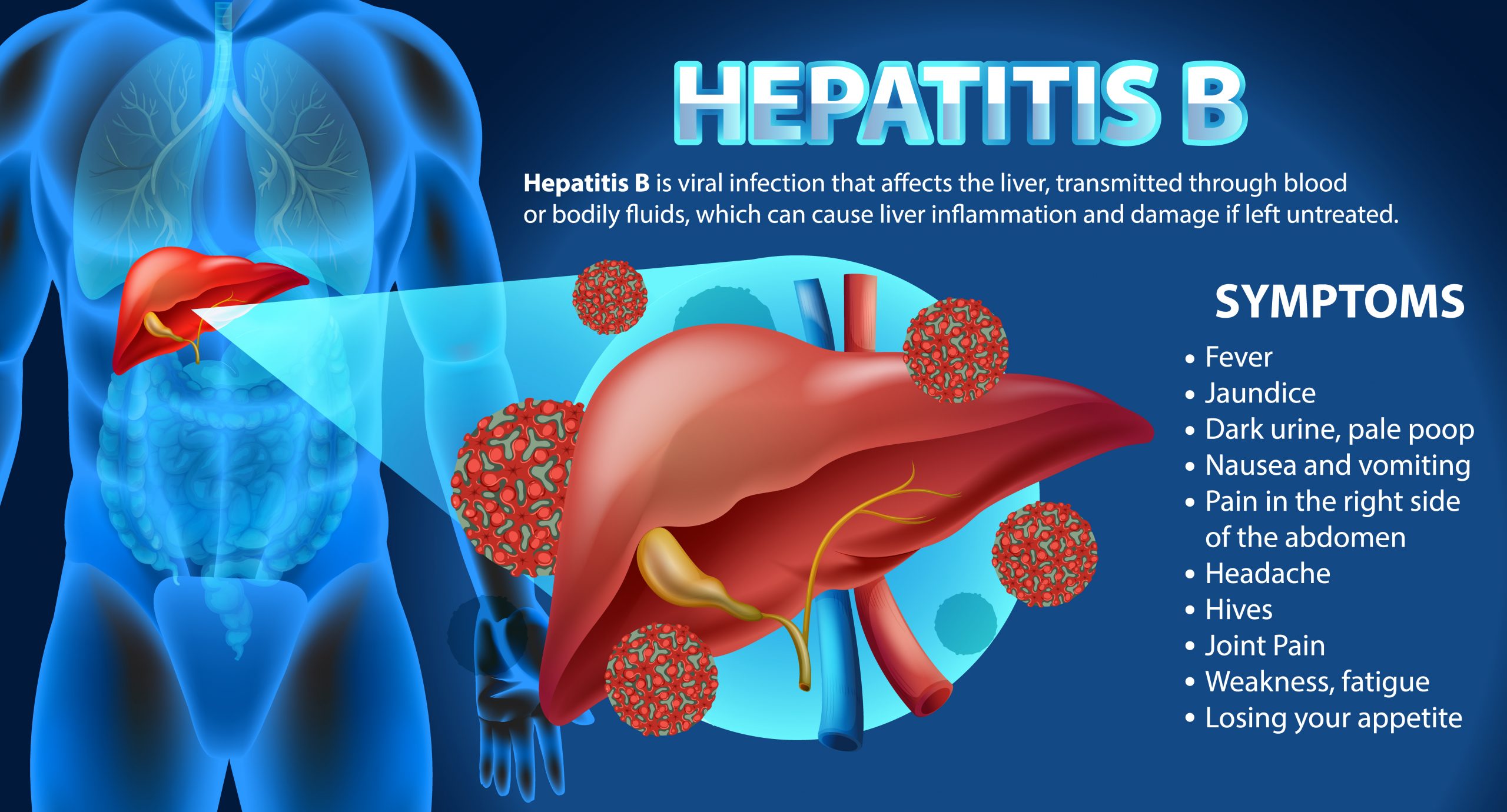
- Other forms of viral hepatitis (B, C, D, E)
- Alcoholic hepatitis
- Drug-induced liver injury
- Autoimmune hepatitis
- Gallbladder disease
- Other viral infections (e.g., Epstein-Barr virus, cytomegalovirus)
Accurate diagnosis is crucial for appropriate patient management and public health interventions to prevent further spread of the virus.
Treatment Approaches for Hepatitis A
Unlike chronic forms of viral hepatitis, hepatitis A is a self-limiting disease that typically resolves on its own without specific antiviral treatment. However, supportive care is essential to manage symptoms and prevent complications.
What are the primary treatment strategies for hepatitis A?
- Rest and adequate hydration
- Nutritional support
- Symptomatic relief (e.g., antiemetics for nausea and vomiting)
- Avoidance of hepatotoxic substances, including alcohol
- Close monitoring of liver function
In most cases, hospitalization is not necessary for hepatitis A patients. However, individuals with severe symptoms, those at risk for complications, or patients with underlying liver disease may require inpatient care. In rare instances where hepatitis A leads to acute liver failure, liver transplantation may be considered as a life-saving measure.

Managing Complications
While most hepatitis A infections resolve without long-term consequences, a small percentage of patients may experience complications. These can include:
- Cholestatic hepatitis (prolonged jaundice and itching)
- Relapsing hepatitis
- Autoimmune hepatitis triggered by the infection
- Acute liver failure (rare, but more common in older adults and those with pre-existing liver disease)
Management of these complications often requires specialized care and may involve additional treatments such as corticosteroids for autoimmune manifestations or intensive supportive care for acute liver failure.
Prevention Strategies: Vaccination and Hygiene Measures
Prevention is the cornerstone of controlling hepatitis A infections. The hepatitis A vaccine, introduced in 1996, has been instrumental in reducing the incidence of the disease in many countries.
Who should receive the hepatitis A vaccine?
- All children at age 1 year
- Travelers to countries where hepatitis A is common
- Men who have sex with men
- People who use or inject drugs
- People with occupational risk of exposure
- People with chronic liver disease or clotting factor disorders
- People experiencing homelessness
The hepatitis A vaccine is typically administered in two doses, given 6 to 18 months apart. It provides long-lasting protection and is highly effective in preventing infection.

Post-Exposure Prophylaxis
In cases of recent exposure to hepatitis A, post-exposure prophylaxis can be administered to prevent infection. This involves:
- Hepatitis A vaccine: Can be given within 2 weeks of exposure to prevent infection
- Immune globulin: May be recommended in addition to or instead of the vaccine for certain high-risk individuals
Timely administration of post-exposure prophylaxis is crucial for its effectiveness, highlighting the importance of prompt reporting and evaluation of potential exposures.
Hygiene and Sanitation Measures
In addition to vaccination, proper hygiene practices play a vital role in preventing hepatitis A transmission. Key preventive measures include:
- Thorough handwashing with soap and water, especially after using the bathroom, changing diapers, and before preparing or eating food
- Proper sanitation and safe food handling practices
- Avoiding consumption of raw or undercooked shellfish from contaminated waters
- Safe sexual practices, including the use of barrier methods
These measures are particularly important in areas with poor sanitation or during outbreaks to limit the spread of the virus.
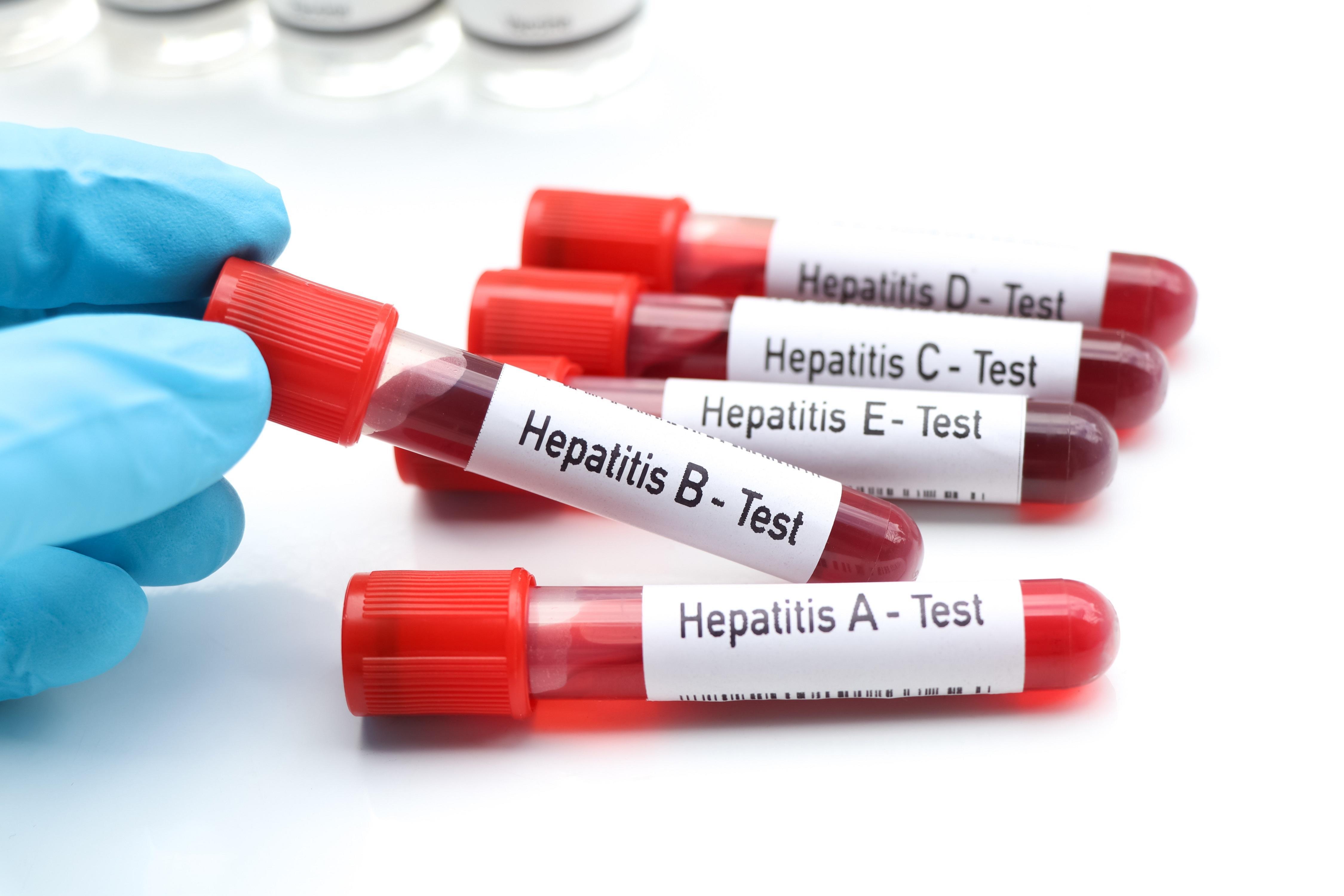
Public Health Implications and Outbreak Management
Hepatitis A outbreaks can have significant public health implications, particularly when they occur in vulnerable populations or in settings with the potential for rapid spread. Effective outbreak management requires a coordinated approach involving healthcare providers, public health officials, and community organizations.
What are the key components of hepatitis A outbreak control?
- Rapid case identification and reporting
- Contact tracing to identify potentially exposed individuals
- Targeted vaccination campaigns for at-risk populations
- Public education on prevention measures
- Environmental health interventions, particularly in food service settings
- Collaboration with community partners to reach vulnerable groups
In recent years, the United States has faced several large-scale hepatitis A outbreaks, particularly among people who use drugs and individuals experiencing homelessness. These outbreaks have highlighted the need for innovative approaches to reach and protect these populations, including mobile vaccination clinics, outreach programs, and partnerships with social service organizations.
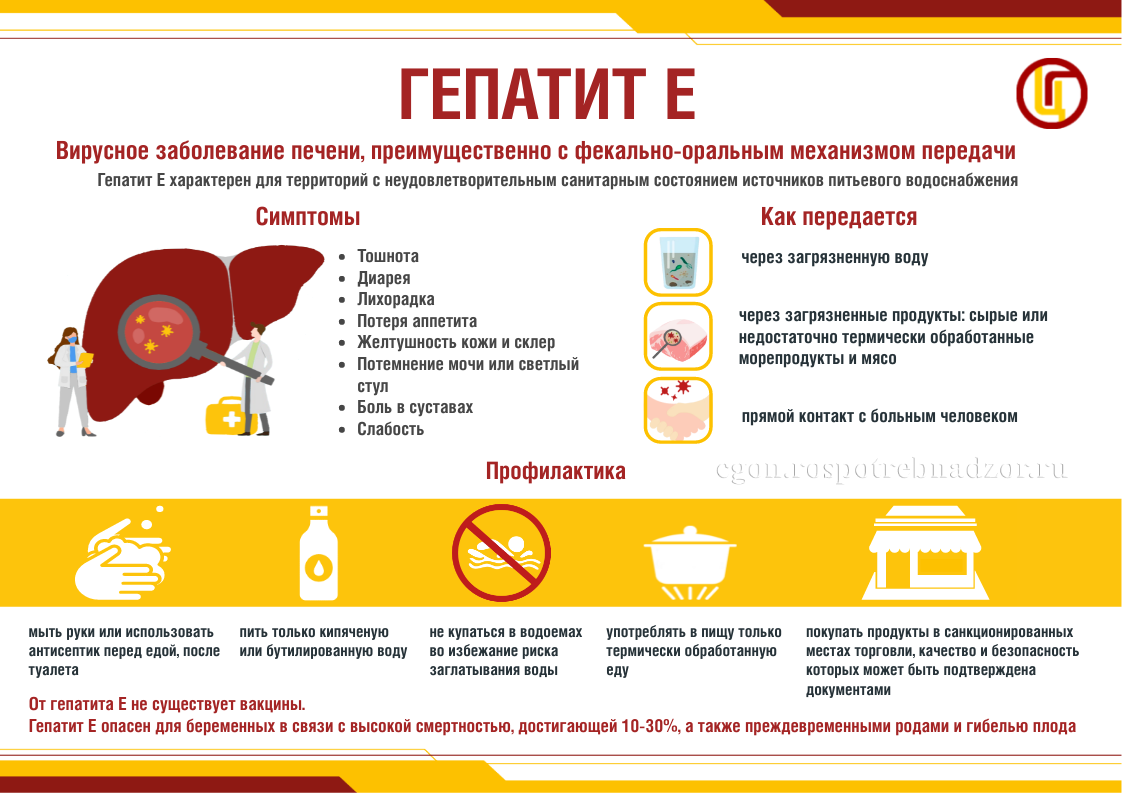
Global Perspective on Hepatitis A Control
While hepatitis A incidence has decreased in many developed countries due to improved sanitation and vaccination programs, it remains a significant public health challenge in many parts of the world. Global efforts to control hepatitis A focus on:
- Improving water and sanitation infrastructure
- Implementing universal childhood vaccination programs in high-endemic areas
- Enhancing surveillance and reporting systems
- Promoting international cooperation for disease control
These global initiatives not only benefit endemic regions but also help reduce the risk of imported cases in countries with low hepatitis A prevalence.
Differentiating Hepatitis A from Other Forms of Viral Hepatitis
Understanding the distinctions between hepatitis A and other forms of viral hepatitis is crucial for appropriate patient management and public health interventions. While hepatitis A, B, and C can all cause liver inflammation, they differ in several key aspects.
How does hepatitis A compare to hepatitis B and C?
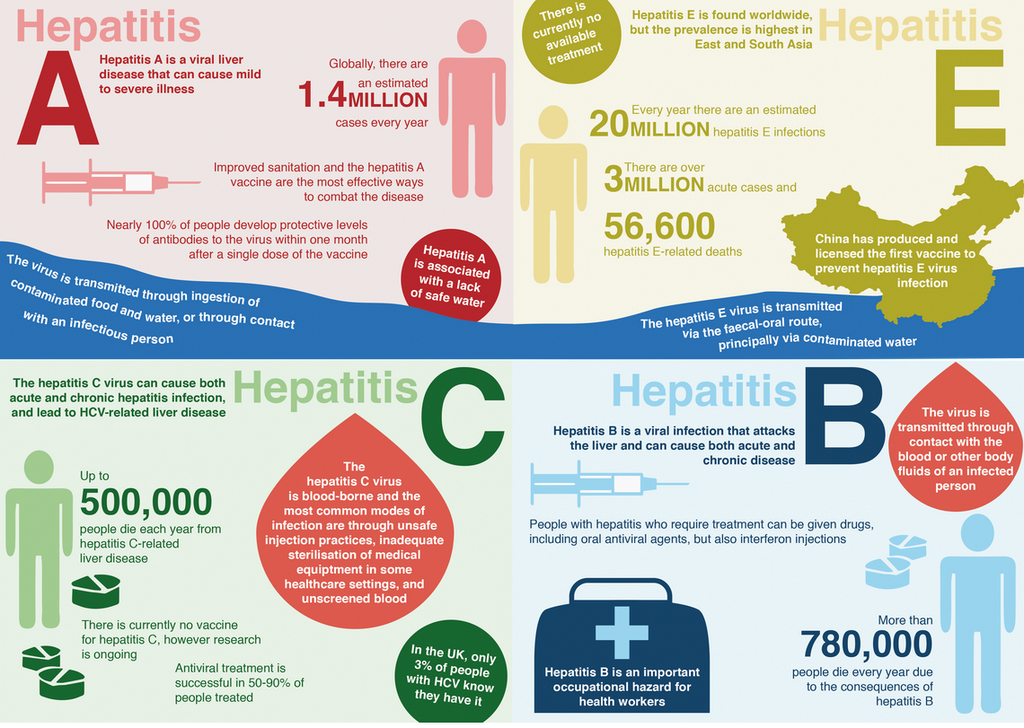
| Characteristic | Hepatitis A | Hepatitis B | Hepatitis C |
|---|---|---|---|
| Transmission | Fecal-oral route | Blood, sexual contact, mother-to-child | Blood-to-blood contact |
| Chronicity | Does not become chronic | Can become chronic | Often becomes chronic |
| Vaccine available | Yes | Yes | No |
| Treatment | Supportive care only | Antiviral medications | Antiviral medications |
| Long-term liver damage | Rare | Common in chronic cases | Common in chronic cases |
These differences have important implications for patient care, prevention strategies, and public health interventions. For example, the lack of chronicity in hepatitis A means that long-term follow-up is generally not necessary, unlike in hepatitis B and C infections where ongoing monitoring and management of chronic liver disease may be required.
Coinfection and Complications
In some cases, individuals may be infected with multiple hepatitis viruses simultaneously or may contract hepatitis A while already living with chronic hepatitis B or C. These scenarios can complicate diagnosis and treatment:

- Coinfection with hepatitis A and B or C can lead to more severe acute illness
- Individuals with chronic liver disease are at higher risk for fulminant hepatitis A
- Diagnosis may be challenging due to overlapping symptoms and serological markers
Healthcare providers must be vigilant in considering the possibility of multiple hepatitis infections, particularly in high-risk populations, to ensure appropriate management and prevent adverse outcomes.
What is Hepatitis A – FAQ
Overview
What is hepatitis?
Hepatitis means inflammation of the liver. When the liver is inflamed or damaged, its function can be affected. Heavy alcohol use, toxins, some medications, and certain medical conditions can cause hepatitis, but it is often caused by a virus. In the United States, the most common hepatitis viruses are hepatitis A virus, hepatitis B virus, and hepatitis C virus.
What is the difference between hepatitis A, hepatitis B, and hepatitis C?
Hepatitis A, hepatitis B, and hepatitis C are liver infections caused by three different viruses. Although each can cause similar symptoms, they are spread in different ways and can affect the liver differently. Hepatitis A is usually a short-term infection and does not become chronic. Hepatitis B and hepatitis C can also begin as short-term, acute infections, but in some people, the virus remains in the body, resulting in chronic disease and long-term liver problems. There are vaccines to prevent hepatitis A and hepatitis B; however, there is no vaccine for hepatitis C.
There are vaccines to prevent hepatitis A and hepatitis B; however, there is no vaccine for hepatitis C.
The page “What is hepatitis?” more information about the differences between hepatitis A, hepatitis B, and hepatitis C.
What is hepatitis A?
Hepatitis A is a highly contagious, short-term liver infection caused by the hepatitis A virus.
How serious is hepatitis A?
People who get hepatitis A may feel sick for a few weeks to several months but usually recover completely and do not have lasting liver damage. In rare cases, hepatitis A can cause liver failure and even death; this is more common in older people and in people with other serious health issues, such as chronic liver disease.
How common is hepatitis A in the United States?
In 2018, a total of 12,474 hepatitis A cases were reported in the United States. Because some people don’t ever get diagnosed, the actual number of cases reported in that year is probably closer to 24,900. Since 2016, person-to-person outbreaks of hepatitis A have been occurring across the United States mainly among people who use injection drugs or are experiencing homelessness, resulting in more than 32,000 cases.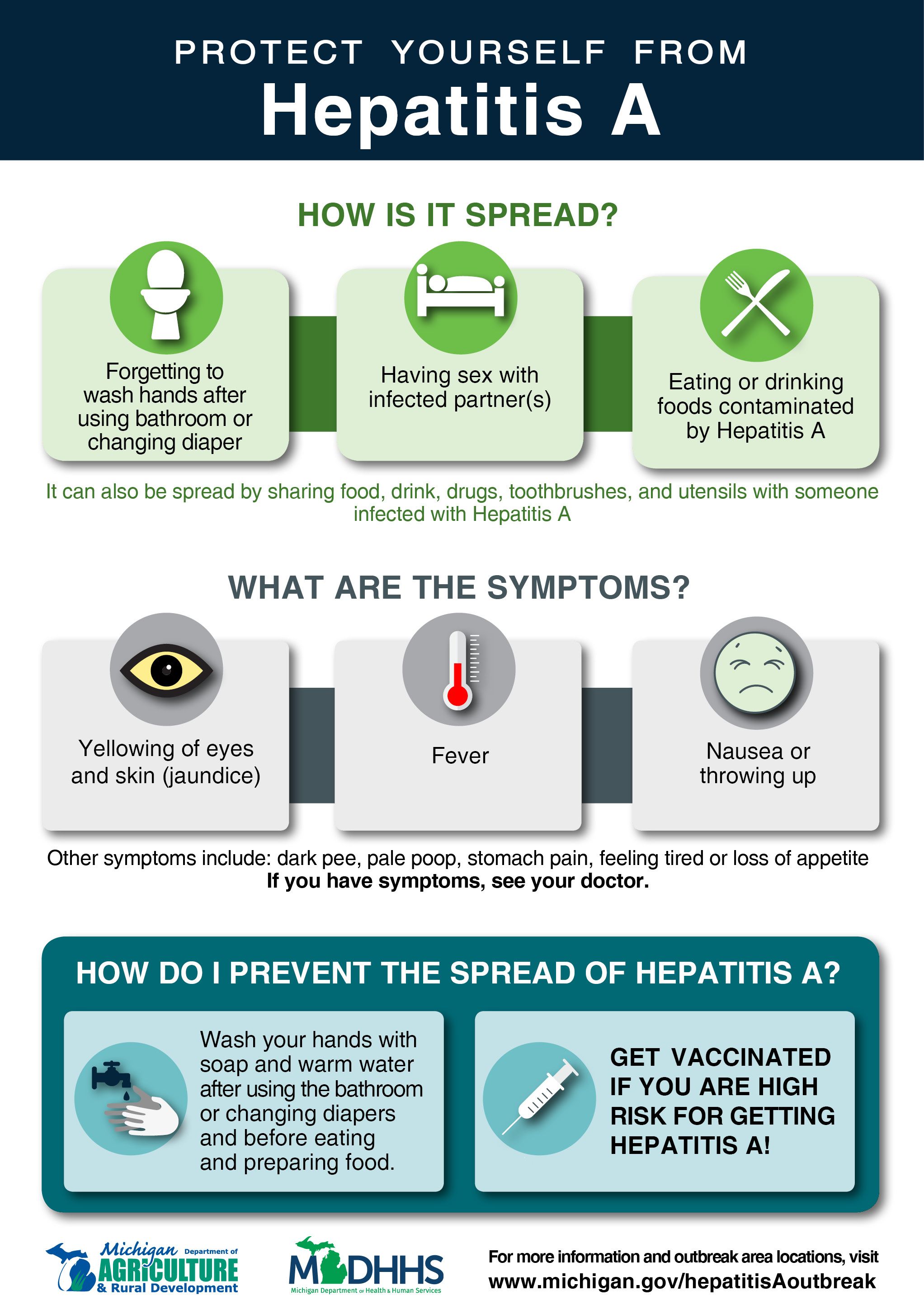
Are cases of hepatitis A increasing in the United States?
Since the hepatitis A vaccine was first recommended in 1996, cases of hepatitis A in the United States declined dramatically. Unfortunately, in recent years the number of people infected has been increasing because there have been multiple outbreaks of hepatitis A in the United States resulting from person-to-person contact, especially among people who use drugs, people experiencing homelessness, and men who have sex with men.
Transmission / Exposure
How is hepatitis A spread?
The hepatitis A virus is found in the stool and blood of people who are infected. The hepatitis A virus is spread when someone ingests the virus (even in amounts too small to see) through:
►Person-to-person contact
Hepatitis A can be spread from close, personal contact with an infected person, such as through certain types of sexual contact (like oral-anal sex), caring for someone who is ill, or using drugs with others. Hepatitis A is very contagious, and people can even spread the virus before they feel sick.
Hepatitis A is very contagious, and people can even spread the virus before they feel sick.
►Eating contaminated food or drink
Contamination of food with the hepatitis A virus can happen at any point: growing, harvesting, processing, handling, and even after cooking. Contamination of food and water happens more often in countries where hepatitis A is common. Although uncommon, foodborne outbreaks have occurred in the United States from people eating contaminated fresh and frozen imported food products.
Who is at risk for hepatitis A?
Although anyone can get hepatitis A, in the United States, certain groups of people are at higher risk for getting infected and for having severe disease if they do get hepatitis A.
People at increased risk for hepatitis A
- International travelers
- Men who have sex with men
- People who use or inject drugs (all those who use illegal drugs)
- People with occupational risk for exposure
- People who anticipate close personal contact with an international adoptee
- People experiencing homelessness
People at increased risk for severe disease from hepatitis A infection
- People with chronic liver disease, including hepatitis B and hepatitis C
- People with HIV
What should I do if I think I have been exposed to hepatitis A virus?
If you think you have been exposed to the hepatitis A virus, call your health professional or your local or state health department as soon as possible, ideally within 2 weeks. A health professional can decide next steps based on your age and overall health.
A health professional can decide next steps based on your age and overall health.
Can I prevent infection after an exposure to the hepatitis A virus?
A single shot of the hepatitis A vaccine can help prevent hepatitis A if given within 2 weeks of exposure. Depending upon your age and health, your doctor may recommend immune globulin in addition to the hepatitis A vaccine.
If I have had hepatitis A in the past, can I get it again?
No. Once you recover from hepatitis A, you develop antibodies, protecting you for life.
How long does hepatitis A virus survive outside the body?
The hepatitis A virus can survive outside the body for months. Heating food and liquids to temperatures of 185°F (85°C) for at least 1 minute can kill the virus. Exposure to freezing temperatures does not kill the virus.
Symptoms
What are the symptoms of hepatitis A?
Not everyone with hepatitis A has symptoms. Adults are more likely to have symptoms than children.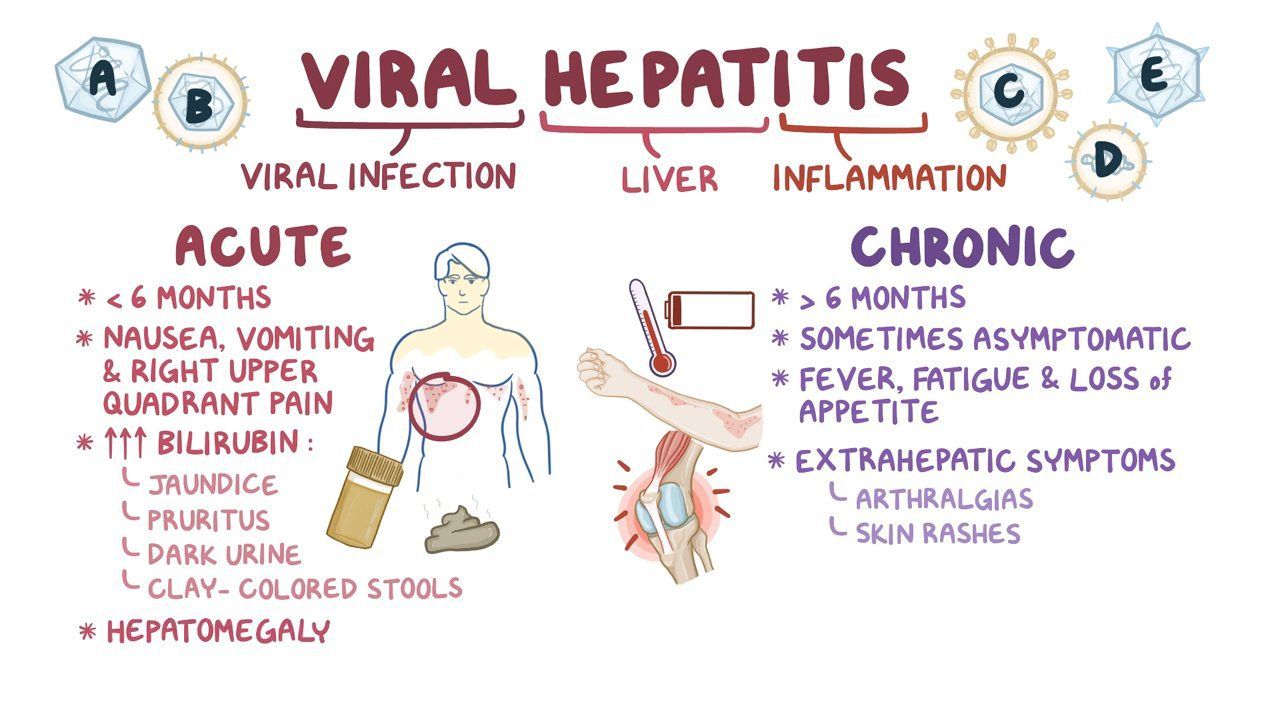 If symptoms develop, they usually appear 2 to 7 weeks after infection. Symptoms usually last less than 2 months, although some people can be ill for as long as 6 months.
If symptoms develop, they usually appear 2 to 7 weeks after infection. Symptoms usually last less than 2 months, although some people can be ill for as long as 6 months.
If symptoms develop, they can include:
- Yellow skin or eyes
- Not wanting to eat
- Upset stomach
- Throwing up
- Stomach pain
- Fever
- Dark urine or light- colored stools
- Diarrhea
- Joint pain
- Feeling tired
Can a person spread hepatitis A virus without having symptoms?
Yes. Many people, especially children, have no symptoms but can still spread the infection. In addition, a person can transmit the hepatitis A virus to others up to 2 weeks before symptoms appear.
Diagnosis / Treatment
How is hepatitis A diagnosed?
A doctor can determine if you have hepatitis A by discussing your symptoms and ordering a blood test that can tell whether you have been recently infected with the virus that causes hepatitis A.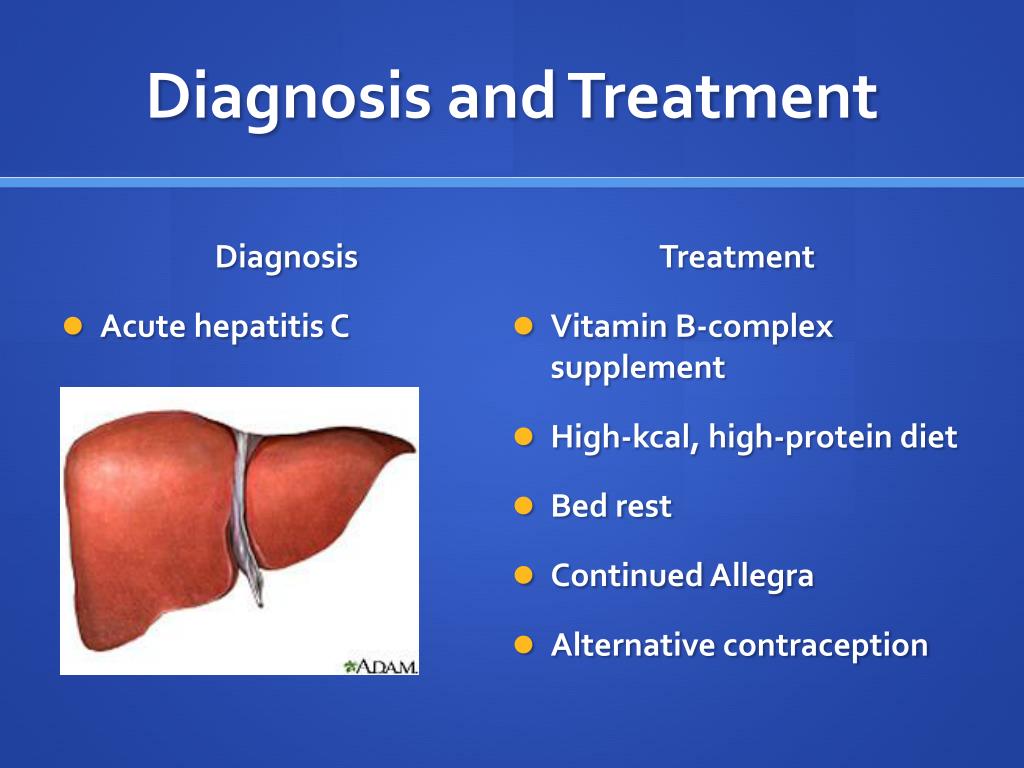
How is hepatitis A treated?
To treat the symptoms of hepatitis A, doctors usually recommend rest, adequate nutrition, and fluids. Some people with severe symptoms will need medical care in a hospital.
Prevention / Vaccination
How can I protect myself against hepatitis A?
The best way to prevent hepatitis A is through vaccination with the hepatitis A vaccine. To get the full benefit of the hepatitis A vaccine, more than one shot is needed. The number and timing of these shots depends on the type of vaccine you are given. Practicing good hand hygiene — including thoroughly washing hands after using the bathroom, changing diapers, and before preparing or eating food — plays an important role in preventing the spread of hepatitis A.
Who should get vaccinated against hepatitis A?
The following people should be vaccinated against hepatitis A:
Children
- All children aged 12–23 months
- All children and adolescents 2–18 years of age who have not previously received hepatitis A vaccine (known as “catch up” vaccination)
People at increased risk for hepatitis A
People at increased risk for severe disease from hepatitis A infection
Other people recommended for vaccination
- Pregnant women at risk for hepatitis A or risk for severe outcome from hepatitis A infection
- Any person who requests vaccination
How is the hepatitis A vaccine given?
There are two types of hepatitis A vaccine. The first type, the single-dose hepatitis A vaccine, is given as two shots, 6 months apart, and both shots are needed for long-term protection against hepatitis A. The other type is a combination vaccine that protects people against both hepatitis A and hepatitis B. The combination vaccine can be given to anyone 18 years of age and older and is given as three shots over 6 months. All three shots are needed for long-term protection for both hepatitis A and hepatitis B.
The first type, the single-dose hepatitis A vaccine, is given as two shots, 6 months apart, and both shots are needed for long-term protection against hepatitis A. The other type is a combination vaccine that protects people against both hepatitis A and hepatitis B. The combination vaccine can be given to anyone 18 years of age and older and is given as three shots over 6 months. All three shots are needed for long-term protection for both hepatitis A and hepatitis B.
Is the hepatitis A vaccine effective?
Yes, both types of hepatitis A vaccine are highly effective in preventing hepatitis A virus infection. Receiving the entire vaccine series (all of the required shots) results in long-term protection.
Is the hepatitis A vaccine safe?
Yes, the hepatitis A vaccine is safe. No serious side effects have been reported from the hepatitis A vaccine. Soreness at the injection site is the most common side effect reported. As with any medicine, there is always a small risk that a serious problem could occur after someone gets the vaccine. However, the potential risks of hepatitis A are much greater than the potential risks associated with the hepatitis A vaccine. Millions of doses of hepatitis A vaccine have been given in the United States and worldwide since the first hepatitis A vaccine was licensed in 1995.
However, the potential risks of hepatitis A are much greater than the potential risks associated with the hepatitis A vaccine. Millions of doses of hepatitis A vaccine have been given in the United States and worldwide since the first hepatitis A vaccine was licensed in 1995.
Who should not receive the hepatitis A vaccine?
People who have ever had a life-threatening allergic reaction to the hepatitis A vaccine or who are known to be allergic to any part of the hepatitis A vaccine should not receive the vaccine. Tell your doctor if you have any severe allergies. Also, the vaccine is not licensed for use in infants under age 1 year.
What is immune globulin?
Immune globulin is a substance made from human blood plasma that contains antibodies, which are the body’s natural defense against infection. Injections of immune globulin may be given under certain circumstances, like when someone is too young to get vaccinated or can’t get vaccinated because of a previous, life-threatening reaction to the hepatitis A vaccine or vaccine component. Unlike the hepatitis A vaccine, immune globulin does not provide long-term protection against infection.
Unlike the hepatitis A vaccine, immune globulin does not provide long-term protection against infection.
Will the hepatitis A vaccine protect me from other forms of hepatitis?
No. The hepatitis A vaccine only protects against hepatitis A. There is a separate vaccine available for hepatitis B. There is also a combination hepatitis A and hepatitis B vaccine that offers protection for both viruses. There is no vaccine for hepatitis C at this time.
Can hepatitis A vaccine be given to people with compromised immune systems, such as hemodialysis patients or people with HIV/AIDS?
Yes. The hepatitis A vaccine can be given to people with compromised immune systems.
Is it harmful to have an extra dose of hepatitis A vaccine or to repeat the entire hepatitis A vaccine series?
No, getting extra doses of hepatitis A vaccine is not harmful.
What should be done if the last dose of hepatitis A vaccine is delayed?
If the second dose has been delayed (more than 6 months since the first dose was given), it should be given as soon as possible.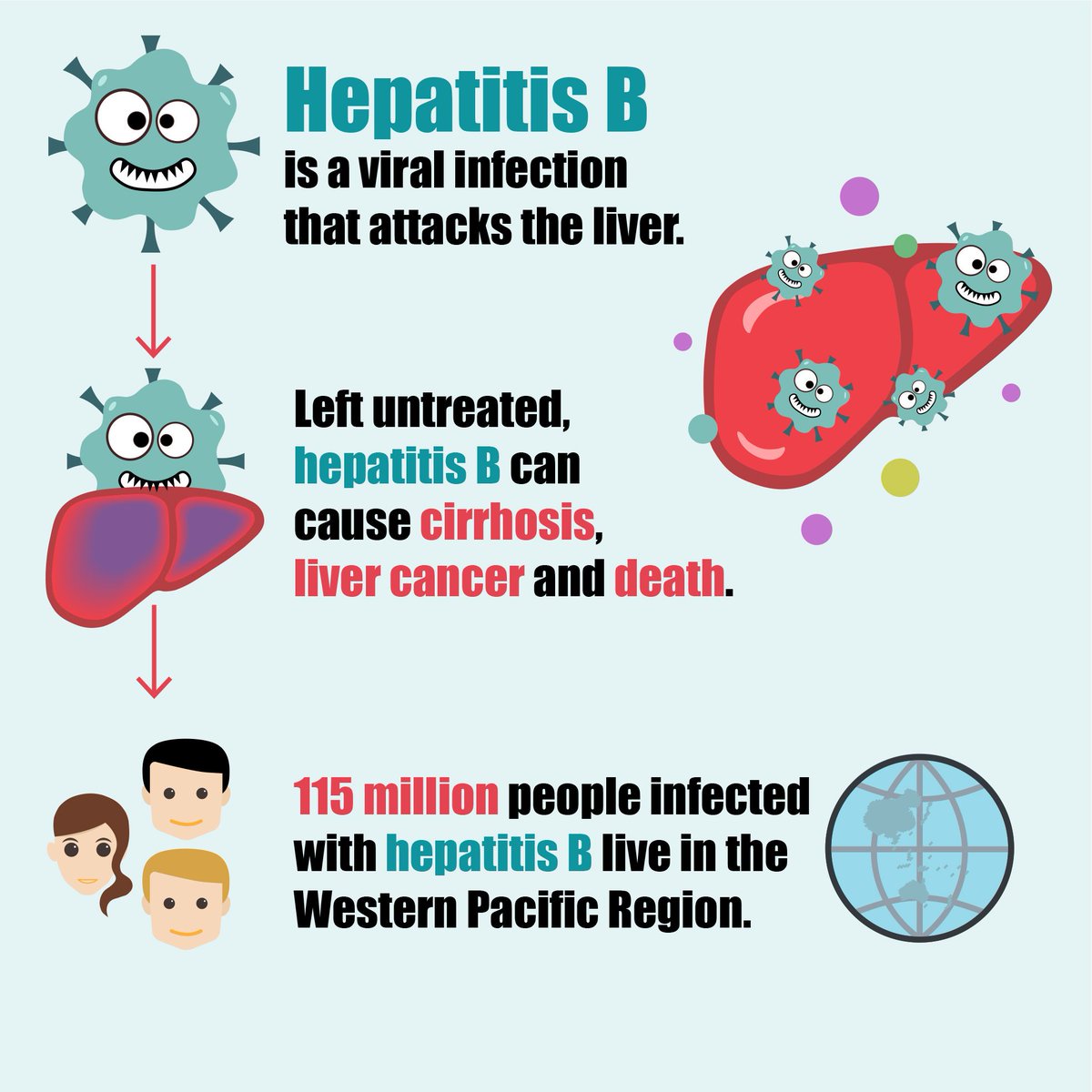 The first dose does not need to be given again.
The first dose does not need to be given again.
Where can I get the hepatitis A vaccine?
Speak with your health-care provider or call your local public health department, where free or low-cost vaccines for adults may be offered. For children, check the Vaccines for Children Program.
Hepatitis A Vaccine and International Travel
Who should get the hepatitis A vaccine before traveling internationally?
All unvaccinated people, along with those who have never had hepatitis A, should be vaccinated before traveling to countries where hepatitis A is common. Travelers to urban areas, resorts, and luxury hotels in countries where hepatitis A is common are still at risk. International travelers have been infected, even though they regularly washed their hands and were careful about what they drank and ate. Those who are too young or can’t get vaccinated because of a previous, life-threatening reaction to the hepatitis A vaccine or vaccine component should receive immune globulin. Travelers to other countries where hepatitis A does not commonly occur are not recommended to receive hepatitis A vaccine before travel.
Travelers to other countries where hepatitis A does not commonly occur are not recommended to receive hepatitis A vaccine before travel.
How soon before travel should I get the hepatitis A vaccine?
You should get the first dose of hepatitis A vaccine as soon as you plan international travel to a country where hepatitis A is common. The vaccine will provide some protection even if you get vaccinated closer to departure. For older adults (age >40 years), people who are immunocompromised, and people with chronic liver disease or other chronic medical conditions the health-care provider may consider, based on several factors, giving an injection of immune globulin at the same time in different limbs.
What should I do if I am traveling internationally but cannot receive hepatitis A vaccine?
People who are allergic to a vaccine component or are younger than 6 months should receive a single dose of immune globulin before traveling to a country where hepatitis A is common. Immune globulin provides effective protection against hepatitis A virus infection for up to 2 months, depending on the dosage given. If you are staying longer than 2 months, you can get another dose of immune globulin during your visit for continued protection against hepatitis A.
Immune globulin provides effective protection against hepatitis A virus infection for up to 2 months, depending on the dosage given. If you are staying longer than 2 months, you can get another dose of immune globulin during your visit for continued protection against hepatitis A.
Hepatitis A
Hepatitis A
- All topics »
- A
- B
- C
- D
- E
- F
- G
- H
- I
- J
- K
- L
- M
- N
- O
- P
- Q
- R
- S
- T
- U
- V
- W
- X
- Y
- Z
- Resources »
- Fact sheets
- Facts in pictures
- Multimedia
- Publications
- Questions & answers
- Tools and toolkits
- Popular »
- Air pollution
- Coronavirus disease (COVID-19)
- Hepatitis
- Monkeypox
- All countries »
- A
- B
- C
- D
- E
- F
- G
- H
- I
- J
- K
- L
- M
- N
- O
- P
- Q
- R
- S
- T
- U
- V
- W
- X
- Y
- Z
- Regions »
- Africa
- Americas
- South-East Asia
- Europe
- Eastern Mediterranean
- Western Pacific
- WHO in countries »
- Statistics
- Cooperation strategies
- Ukraine emergency
- All news »
- News releases
- Statements
- Campaigns
- Commentaries
- Events
- Feature stories
- Speeches
- Spotlights
- Newsletters
- Photo library
- Media distribution list
- Headlines »
- Focus on »
- Afghanistan crisis
- COVID-19 pandemic
- Northern Ethiopia crisis
- Syria crisis
- Ukraine emergency
- Monkeypox outbreak
- Greater Horn of Africa crisis
- Latest »
- Disease Outbreak News
- Travel advice
- Situation reports
- Weekly Epidemiological Record
- WHO in emergencies »
- Surveillance
- Research
- Funding
- Partners
- Operations
- Independent Oversight and Advisory Committee
- WHO’s Health Emergency Appeal 2023
- Data at WHO »
- Global Health Estimates
- Health SDGs
- Mortality Database
- Data collections
- Dashboards »
- COVID-19 Dashboard
- Triple Billion Dashboard
- Health Inequality Monitor
- Highlights »
- Global Health Observatory
- SCORE
- Insights and visualizations
- Data collection tools
- Reports »
- World Health Statistics 2022
- COVID excess deaths
- DDI IN FOCUS: 2022
- About WHO »
- People
- Teams
- Structure
- Partnerships and collaboration
- Collaborating centres
- Networks, committees and advisory groups
- Transformation
- Our Work »
- General Programme of Work
- WHO Academy
- Activities
- Initiatives
- Funding »
- Investment case
- WHO Foundation
- Accountability »
- Audit
- Programme Budget
- Financial statements
- Programme Budget Portal
- Results Report
- Governance »
- World Health Assembly
- Executive Board
- Election of Director-General
- Governing Bodies website
- Member States Portal
- Home/
- Newsroom/
- Fact sheets/
- Detail/
- Hepatitis A
Key facts
- Hepatitis A is an inflammation of the liver that can cause mild to severe illness.

- The hepatitis A virus (HAV) is transmitted through ingestion of contaminated food and water or through direct contact with an infectious person.
- Almost everyone recovers fully from hepatitis A with a lifelong immunity. However, a very small proportion of people infected with hepatitis A could die from fulminant hepatitis.
- The risk of hepatitis A infection is associated with a lack of safe water and poor sanitation and hygiene (such as contaminated and dirty hands).
- A safe and effective vaccine is available to prevent hepatitis A.
Overview
Hepatitis A is an inflammation of the liver caused by the hepatitis A virus (HAV). The virus is primarily spread when an uninfected (and unvaccinated) person ingests food or water that is contaminated with the faeces of an infected person. The disease is closely associated with unsafe water or food, inadequate sanitation, poor personal hygiene and oral-anal sex.
Unlike hepatitis B and C, hepatitis A does not cause chronic liver disease but it can cause debilitating symptoms and rarely fulminant hepatitis (acute liver failure), which is often fatal. WHO estimates that in 2016, 7134 persons died from hepatitis A worldwide (accounting for 0.5% of the mortality due to viral hepatitis).
WHO estimates that in 2016, 7134 persons died from hepatitis A worldwide (accounting for 0.5% of the mortality due to viral hepatitis).
Hepatitis A occurs sporadically and in epidemics worldwide, with a tendency for cyclic recurrences. Epidemics related to contaminated food or water can erupt explosively, such as the epidemic in Shanghai in 1988 that affected about 300 000 people (1). They can also be prolonged, affecting communities for months through person-to-person transmission. Hepatitis A viruses persist in the environment and can withstand food production processes routinely used to inactivate or control bacterial pathogens.
Geographical distribution
Geographical distribution areas can be characterized as having high, intermediate or low levels of hepatitis A virus infection. However, infection does not always mean disease because infected young children do not experience any noticeable symptoms.
Infection is common in low- and middle-income countries with poor sanitary conditions and hygienic practices, and most children (90%) have been infected with the hepatitis A virus before the age of 10 years, most often without symptoms (2). Infection rates are low in high-income countries with good sanitary and hygienic conditions. Disease may occur among adolescents and adults in high-risk groups, such as persons who inject drugs (PWID), men who have sex with men (MSM), people travelling to areas of high endemicity and in isolated populations, such as closed religious groups. In the United States of America, large outbreaks have been reported among persons experiencing homelessness. In middle-income countries and regions where sanitary conditions are variable, children often escape infection in early childhood and reach adulthood without immunity.
Infection rates are low in high-income countries with good sanitary and hygienic conditions. Disease may occur among adolescents and adults in high-risk groups, such as persons who inject drugs (PWID), men who have sex with men (MSM), people travelling to areas of high endemicity and in isolated populations, such as closed religious groups. In the United States of America, large outbreaks have been reported among persons experiencing homelessness. In middle-income countries and regions where sanitary conditions are variable, children often escape infection in early childhood and reach adulthood without immunity.
Transmission
The hepatitis A virus is transmitted primarily by the faecal-oral route; that is when an uninfected person ingests food or water that has been contaminated with the faeces of an infected person. In families, this may happen though dirty hands when an infected person prepares food for family members. Waterborne outbreaks, though infrequent, are usually associated with sewage-contaminated or inadequately treated water.
The virus can also be transmitted through close physical contact (such as oral-anal sex) with an infectious person, although casual contact among people does not spread the virus.
Symptoms
The incubation period of hepatitis A is usually 14–28 days.
Symptoms of hepatitis A range from mild to severe and can include fever, malaise, loss of appetite, diarrhoea, nausea, abdominal discomfort, dark-coloured urine and jaundice (a yellowing of the eyes and skin). Not everyone who is infected will have all the symptoms.
Adults have signs and symptoms of illness more often than children. The severity of disease and fatal outcomes are higher in older age groups. Infected children under 6 years of age do not usually experience noticeable symptoms, and only 10% develop jaundice. Hepatitis A sometimes relapses, meaning the person who just recovered falls sick again with another acute episode. This is normally followed by recovery.
Who is at risk?
Anyone who has not been vaccinated or previously infected can get infected with the hepatitis A virus. In areas where the virus is widespread (high endemicity), most hepatitis A infections occur during early childhood. Risk factors include:
In areas where the virus is widespread (high endemicity), most hepatitis A infections occur during early childhood. Risk factors include:
- poor sanitation;
- lack of safe water;
- living in a household with an infected person;
- being a sexual partner of someone with acute hepatitis A infection;
- use of recreational drugs;
- sex between men; and
- travelling to areas of high endemicity without being immunized.
Diagnosis
Cases of hepatitis A are not clinically distinguishable from other types of acute viral hepatitis. Specific diagnosis is made by the detection of HAV-specific immunoglobulin G (IgM) antibodies in the blood. Additional tests include reverse transcriptase polymerase chain reaction (RT-PCR) to detect the hepatitis A virus RNA and may require specialized laboratory facilities.
Treatment
There is no specific treatment for hepatitis A. Recovery from symptoms following infection may be slow and can take several weeks or months. It is important to avoid unnecessary medications that can adversely affect the liver, e.g. acetaminophen, paracetamol.
Hospitalization is unnecessary in the absence of acute liver failure. Therapy is aimed at maintaining comfort and adequate nutritional balance, including replacement of fluids that are lost from vomiting and diarrhoea.
Prevention
Improved sanitation, food safety and immunization are the most effective ways to combat hepatitis A.
The spread of hepatitis A can be reduced by:
- adequate supplies of safe drinking water;
- proper disposal of sewage within communities; and
- personal hygiene practices such as regular handwashing before meals and after going to the bathroom.

Several injectable inactivated hepatitis A vaccines are available internationally. All provide similar protection from the virus and have comparable side effects. No vaccine is licensed for children younger than 1 year of age. In China, a live attenuated vaccine is also available.
WHO response
Global health sector strategies on, respectively, HIV, viral hepatitis, and sexually transmitted infections for the period 2022–2030 (GHSSs) guide the health sector in implementing strategically focused responses to achieve the goals of ending AIDS, viral hepatitis (especially chronic hepatitis B and C) and sexually transmitted infections by 2030.
The GHSS recommend shared and disease-specific country actions supported by actions by WHO and partners. They consider the epidemiological, technological, and contextual shifts of previous years, foster learnings across the disease areas, and create opportunities to leverage innovations and new knowledge for effective responses to the diseases. They call to scale up prevention, testing and treatment of viral hepatitis with a focus to reach populations and communities most affected and at risk for each disease, as well as addressing gaps and inequities. They promote synergies under a universal health coverage and primary health care framework and contribute to achieving the goals of the 2030 Agenda for Sustainable Development.
They call to scale up prevention, testing and treatment of viral hepatitis with a focus to reach populations and communities most affected and at risk for each disease, as well as addressing gaps and inequities. They promote synergies under a universal health coverage and primary health care framework and contribute to achieving the goals of the 2030 Agenda for Sustainable Development.
WHO organizes annual World Hepatitis Day campaigns (as 1 of its 9 flagship annual health campaigns) to increase awareness and understanding of viral hepatitis. For World Hepatitis Day 2023, WHO focuses on the theme “One life, one liver” to illustrate the importance of the liver for a healthy life and the need to scale up viral hepatitis prevention, testing and treatment to prevent liver diseases and achieve the 2030 hepatitis elimination target.
Global hepatitis report, 2017
World Hepatitis Day
Global health sector strategy on viral hepatitis
Publications
- Financing prevention, testing and treatment of hepatitis in the context of Universal Health Coverage
- Guidelines for viral hepatitis planning and tracking progress towards elimination
- Immunological basis for immunization: hepatitis A
- The global prevalence of hepatitis A virus infection and susceptibility
- WHO position paper on hepatitis A vaccines
- More WHO publications
More about hepatitis
- WHO’s work on hepatitis
- Global Hepatitis Programme
Treatment of hepatitis A – signs, causes, symptoms, diagnosis, prevention
Hepatitis A
07 Treatment of viral hepatitis A
Viral hepatitis A is an infectious disease that affects the liver, occurs in an acute form and is accompanied by short-term symptoms. Jaundice, hepatitis a, Botkin’s disease in everyday life are synonymous.
Jaundice, hepatitis a, Botkin’s disease in everyday life are synonymous.
Causes of hepatitis A
The causative agent of hepatitis A is a virus that multiplies in the liver cells. More than 60% of patients are children of 3-7 years of age. The disease often takes the form of epidemic outbreaks.
How hepatitis a is contracted: this is a classic intestinal infection, so you can become infected by drinking contaminated water or food, and not observing hygiene rules.
Hepatitis A virus is excreted in the faeces of patients, as well as carriers of infection or patients with an erased form of the disease. Getting into the gastrointestinal tract of a healthy person, it penetrates through the blood into hepatocytes and destroys them. The disease proceeds only in an acute form and ends with recovery. In almost all adults, antibodies are found in the blood, indicating an infection.
It is impossible to infect a child through blood, sexual contact and from the mother.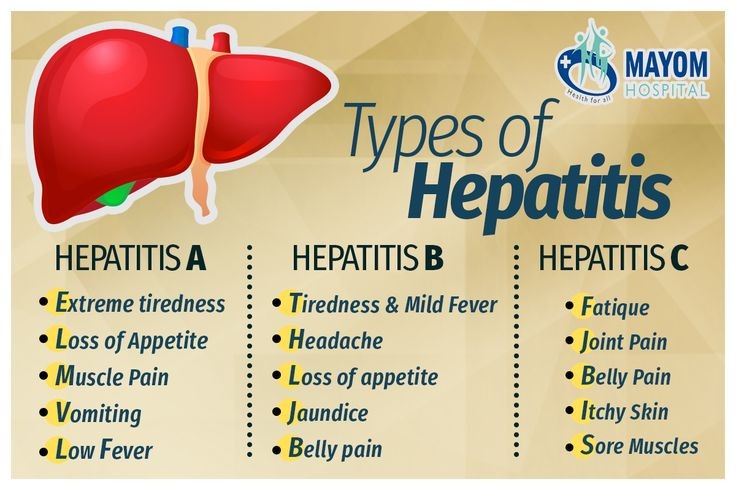
The incidence increases in autumn and winter, and in the summer months, cases of the disease are rarely recorded. After infection, lifelong immunity remains.
Symptoms of viral hepatitis A
Acute hepatitis A occurs in stages.
- The incubation period is from 2 weeks to a month. There are no symptoms of hepatitis A, but there is already a virus in the blood and abnormal liver function is determined.
- The preicteric period lasts from 3 to 8 days. Symptoms of hepatitis a in children occur acutely: the temperature rises, intoxication occurs, severe weakness, nausea, pain in the liver, headache, sleep and stool disturbances. Children become moody and irritable. After 1 – 2 days, the temperature decreases, and the patient’s condition improves somewhat. Adults at this time may experience the same symptoms, but in a milder form.
- The icteric period lasts up to 2 weeks. At the same time, the signs of hepatitis a weaken, the state of health of most patients returns to normal.
 Darkening of urine and discoloration of feces, jaundice is determined. The liver is enlarged.
Darkening of urine and discoloration of feces, jaundice is determined. The liver is enlarged. - The post-icteric period lasts quite a long time. At this time, there is a gradual recovery of the liver.
The convalescence period lasts up to 3 months. At this time, patients feel quite healthy, sometimes complain of fatigue, abdominal pain. In the blood, an increase in the activity of liver enzymes is periodically determined.
The course of the disease can be acute (in 95% of cases), protracted, with exacerbations, with biliary dyskinesia and other complications. Therefore, in each case, the approach to the treatment of such a patient is individual.
Diagnosis of hepatitis A
In addition to epidemiological and clinical data, diagnosis of hepatitis A includes:
- biochemical blood test to determine the activity of liver enzymes and the level of bilirubin;
- analysis for hepatitis a – detection of viral antigen by PCR or IgM class antibodies to it.

Hepatitis A treatment
Hepatitis A treatment is usually done at home. Only patients with severe forms of the disease are hospitalized. Bed rest is recommended in the first days until you feel better, then it gradually expands.
Hepatitis A diet includes:
- proteins: dairy products, lean meat and fish, scrambled eggs;
- fats: butter, olive, sunflower oil;
- carbohydrates: rice, oatmeal, buckwheat, potatoes, pasta, sugar, vegetables, juices, fruits;
- allowed salads, vinaigrette, honey, marshmallow, jam, prunes, dried apricots, raisins, bread.
Prohibited:
- pork, other fatty meats, poultry or fish;
- canned food;
- sausage;
- legumes;
- confectionery and chocolate;
- marinades and spices;
- garlic, radish, spicy cheese, mayonnaise and other foods that irritate the digestive tract.
Cholagogues, vitamins, essential phospholipids, ursosan, enterosorbents are prescribed. Antiviral drugs and antibiotics are not used.
Antiviral drugs and antibiotics are not used.
Traditional methods of treatment:
- infusion of valerian, hawthorn and mint;
- infusion of immortelle, yarrow, wormwood and dill;
- infusion of wild rose and rowan berries;
- raw potato juice.
Hepatitis A prophylaxis
There are non-specific and specific prophylaxis for hepatitis A. Anti-epidemic measures:
- when a case of illness is detected, all contact persons are examined and their blood is taken for analysis for early detection of the epidemic;
- current and final disinfection is carried out in the focus of the disease, the quality of water and food is carefully monitored;
- In contact with the patient, prepared antibodies are administered in the form of immunoglobulin.
Immunoglobulin is not a hepatitis A vaccine, but only a measure to support the body’s defense against the virus. It is administered in the first 7 days after the diagnosis of the disease in the focus.
The only way to reliably protect a child from the virus is the hepatitis A vaccine. Domestic preparations are allowed for use, as well as the vaccines Havrix, Avaxim, Vakta, Twinrix. They are well tolerated and rarely cause adverse reactions, mainly in allergic children.
Children are vaccinated against hepatitis A at one year of age, and then again after 6 to 12 months. This scheme provides reliable immunity in 95% of those vaccinated.
Benefits of the Mama Papa Ya Clinic
If a child is ill with viral hepatitis A, the Mama Papa Ya family clinic network offers services for the diagnosis and treatment of this disease. Our advantages:
- a large network of clinic branches in Moscow and other cities;
- affordable prices for services;
- careful laboratory diagnosis of the disease;
- prescribing modern drugs for a speedy recovery;
- nutritionist consultation;
- the possibility of vaccinating patients of any age with modern drugs;
- dispensary observation of a sick person in comfortable conditions, without queues.

To make an appointment for a consultation, you can call the clinic or leave a request on our website.
Reviews
Good clinic, good doctor! Raisa Vasilievna can clearly and easily explain what the essence of the problem is. If something is wrong, she talks about everything directly, not in a veiled way, as other doctors sometimes do. I don’t regret that I went to her.
Anna
I would like to thank the staff of the clinic Mom, Dad, me. The clinic has a very friendly atmosphere, very friendly and cheerful staff and highly qualified specialists. Thank you very much! I wish prosperity to your clinic.
Anonymous user
Today I removed a mole on my face at the dermatologist Kodareva I.A. Doctor is very thorough! Correct! Thanks a lot! Administrator Borshchevskaya Julia is friendly, clearly fulfills her duties.
Belova E.M.
Today I was served in the clinic, I was satisfied with the staff, as well as the gynecologist. Everyone treats patients with respect and care. We thank them very much and continue to prosper.
Everyone treats patients with respect and care. We thank them very much and continue to prosper.
Anonymous
The Mama Papa Ya clinic in Lyubertsy is very good. The team is friendly and responsive. I recommend this clinic to all my friends. Thanks to all doctors and administrators. I wish the clinic prosperity and many adequate clients.
Iratiev V.V.
Visited the clinic “Mama Papa Ya” with a child. I needed a consultation with a pediatric cardiologist. I liked the clinic. Good service doctors. We didn’t stand in line, everything was the same price.
Evgeniya
I liked the first visit. I was carefully examined, additional examinations were prescribed, and good recommendations were given. I will continue the treatment further, I liked the conditions in the clinic.
Kristina
The doctor carefully examined my husband, ordered an ECG and made a preliminary diagnosis. She made recommendations about our situation and ordered additional examinations.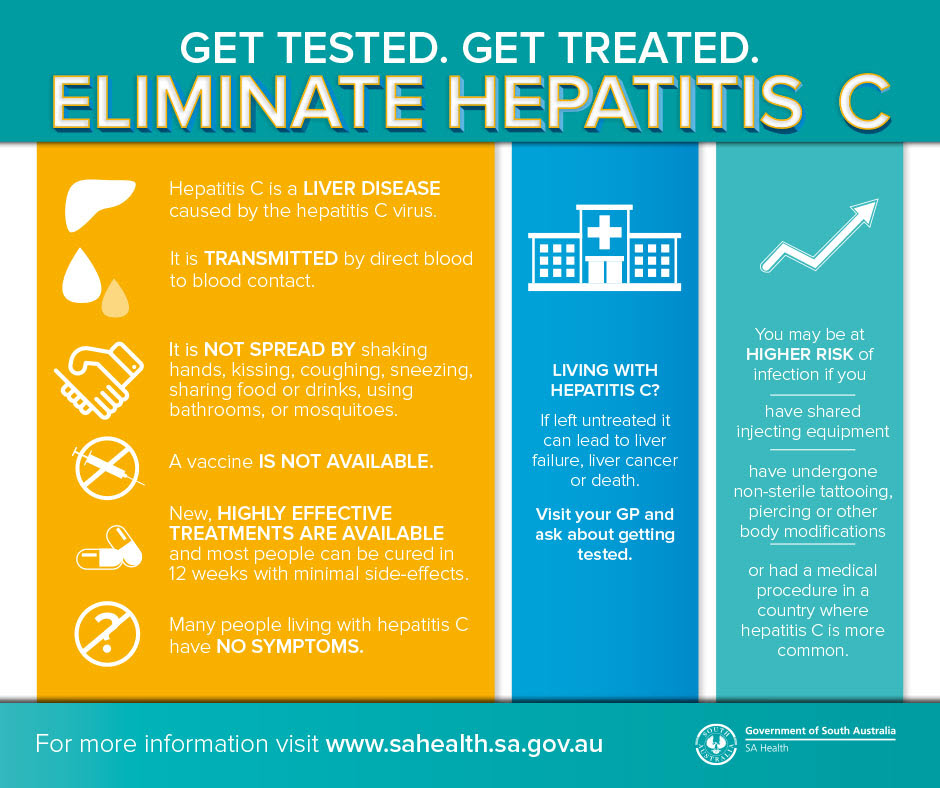 So far, there are no comments. Financial agreements have been met.
So far, there are no comments. Financial agreements have been met.
Marina Petrovna
I really liked the clinic. Helpful staff. Was at the appointment with the gynecologist Mikhailova E.A. Satisfied, there are more such doctors. Thank you!!!
Olga
Recommended reading:
- Viral hepatitis B symptoms
- Causes of hydrocephalus in a child
- Flu treatment
- Abscess symptoms
Hepatitis A symptoms and treatment
Hepatitis A is a liver disease caused by the hepatitis A virus (HAV). HAV causes the liver to swell and prevent it from working properly.
HAV usually resolves spontaneously in almost all cases without serious complications. However, HAV can cause liver failure in some patients. About 100 people die of HAV every year in the United States. Those at risk for serious long-term consequences of HAV include people with other liver diseases and people over 60 years of age.
Facts in Brief
- The incidence of hepatitis A in the United States has decreased by more than 95% since the hepatitis A vaccine became available in 1995 year.

- Symptoms of hepatitis A usually last less than 2 months.
Information for the newly diagnosed
Who is at risk of contracting hepatitis A?
Anyone who has been in close contact with someone who has HAV, or who has eaten food or water contaminated with HAV, is at risk.
- Ever lived with an infected person
- Have ever been the sexual partner of an infected person
- Man who has sex with men
- Ever used drugs
- Ever traveled to countries where HAV is common;
HAV most commonly distributed:
- Do not wash hands before preparing or eating
- Do not wash hands after going to the toilet or changing a diaper.
- Eating raw or undercooked shellfish from sewage contaminated waters.
What are the symptoms of hepatitis A virus?
Low energy is the most common symptom of HAV. Other symptoms include fever, fatigue, loss of appetite, nausea, headache, itchy skin, muscle soreness, pain near the liver, and jaundice (yellowing of the skin and whites of the eyes).
Symptoms of HAV may appear two to seven weeks after infection and are often mild. Children may not have symptoms. Symptoms usually resolve within two months. If you think you have HAV, it’s important to see a doctor – HAV symptoms are similar to other, more serious liver diseases.
How is hepatitis A diagnosed?
Hepatitis A is diagnosed on the basis of a blood test.
A blood test is done to find out if you have antibodies to the hepatitis A virus. Antibodies are proteins created by the immune system in response to viruses.
How is hepatitis A treated?
HAV usually clears up on its own within six months.
Doctors often recommend bed rest, drinking plenty of fluids, eating a healthy diet, and avoiding alcohol. Medicines are not used to treat HAV. Talk to your doctor before taking prescription or over-the-counter medications, vitamins, or herbal supplements.
Itchy skin caused by HAV can be treated with over-the-counter anti-itch medicines.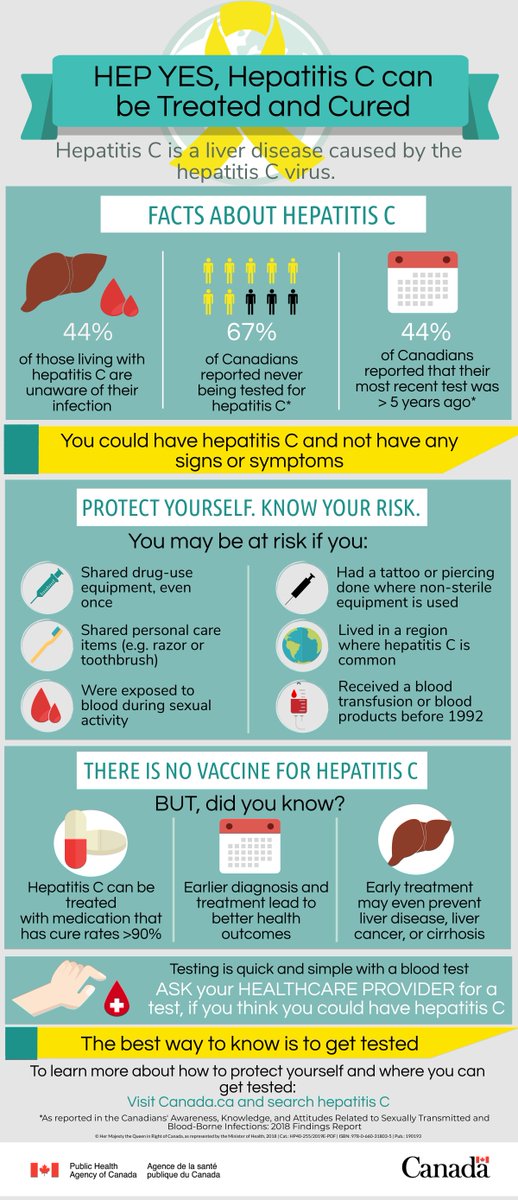
It is important to see a doctor regularly to make sure your body is completely healed of the virus. Also talk to your doctor about hepatitis B vaccination.
What is the best way to stop the spread of hepatitis A?
Hepatitis A vaccination is the best way to prevent hepatitis A. Hepatitis A vaccine is given in two doses, usually about 2 months apart.
Other ways to stop the spread of HAV:
- Always wash your hands with soap and warm water immediately after going to the toilet or changing a diaper.
- Always wash your hands with warm soapy water before preparing or eating.
Who should be vaccinated against hepatitis A?
Those who should be vaccinated against HAV include:
- All children aged 1 year
- All children over 1 year of age living in areas where HBV is common.
- People with chronic liver disease
- People with bleeding disorders
- People who have had or are waiting for a liver transplant
- People who use drugs
- Men who have sex with men
- Travelers to countries where HAV is common
- Sexual partners and family members of people with HAV
If you think you have been exposed to HAV, your doctor may give you an HAV vaccination or immunoglobulin shot, which can help increase your protection against HAV.
Questions to ask your doctor
- What medicines can I take for a fever?
- Are there medicines for nausea that I should take?
- Do I need a hepatitis A booster?
- Should I get a hepatitis B booster?
- Am I contagious? How can I notify people I may have been in close contact with?
Finding Clinical Trials
Clinical trials are scientific studies that test how well new medical approaches work in people. Before an experimental treatment can be tested in humans in clinical trials, it must demonstrate benefit in laboratory or animal studies. The most promising treatments are then transferred to clinical trials to identify new ways to safely and effectively prevent, screen, diagnose, or treat disease.
Talk to your doctor about the current progress and results of these trials to get the latest information about new treatments. Participation in clinical trials is a great way to help treat, prevent, and manage liver disease and its complications.



 Darkening of urine and discoloration of feces, jaundice is determined. The liver is enlarged.
Darkening of urine and discoloration of feces, jaundice is determined. The liver is enlarged.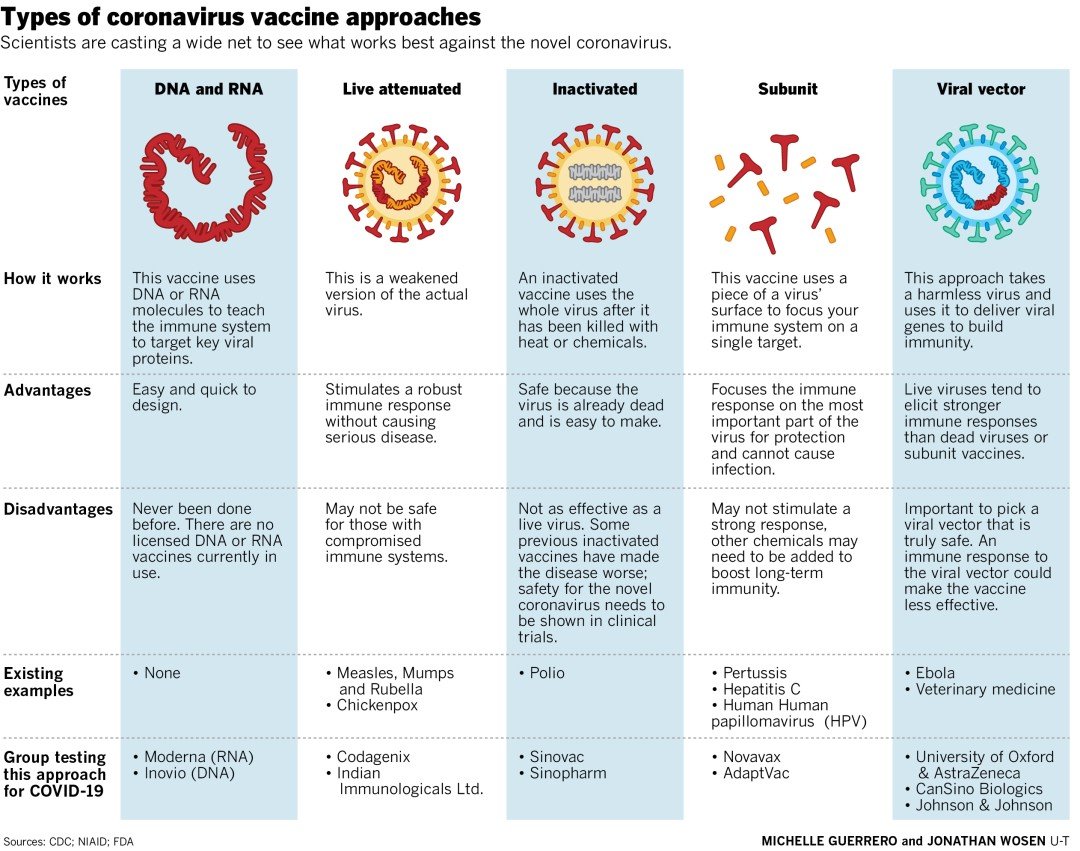
:max_bytes(150000):strip_icc()/hepatitis-symptoms-1760105-FINAL-38d3a724b7174e2f9f290e70db88e197.jpg)
